31 - Surgeonfish Part 3
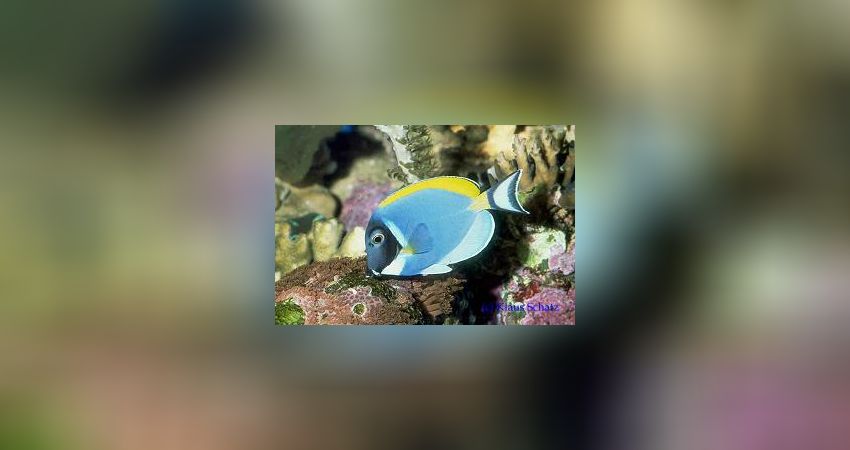
In Part 3 we will look at the genus Acanthurus and summarise the species. We give you an overview of which species are easier and which should be avoided, especially with regard to the size of the tank.
Part 3: Genus Acanthurus and summary
36 Acanthurus species are known and this will probably not change much. We would like to introduce some species that are often found in the trade in more detail. In addition, there are of course many other species, but they are not very widespread in the trade and, at well over 40 cm, are simply too large.
We would like to start with the most delicate of all surgeonfishes, Acanthurus leucosternon, the so-called white-throated surgeonfish.

It is one of the most popular and best-selling surgeonfishes of the genus Acanthurus, probably because of its striking colouration. We can only agree that it is the most beautiful of the surgeonfishes. Unfortunately, however, it is also the most sensitive and delicate surgeonfish, which unfortunately does not survive aquarium life for very long. We can't give any concrete figures, but we estimate that out of 100 animals sold, a maximum of 10 survive the first three months and half of them, i.e. 5 animals out of 100, survive the first year in the aquarium. A really bad average that shows how difficult it can be to keep and care for this delicate animal.
Acanthurus leucosternon, the white-throated surgeonfish, is widespread in the Indics, as far north as the Christmas Islands like Cocos Keeling Islands. It lives solitary and territorial in the shallow waters of coral reefs. It often feeds in large schools, which then graze on algae together. Afterwards, however, they all go their separate ways. This surgeonfish makes the highest demands on the aquarist: particularly clean and stable water conditions, plenty of swimming space, a balanced diet and an appropriate UV system are the least you need to care for it. In addition, the white-throated surgeonfish sometimes proves to be quite aggressive against other surgeonfish, sometimes even against other fish species of the same colour.
Keeping a pair is not possible under any circumstances, just like keeping a group. All attempts made so far failed, so we can only advise not to try it again. We don't know exactly why the white throat is so sensitive, some assume that it is due to the coral stocking to which the fish reacts to the stinging toxins. However, we don't think so. There are some aquarists who have kept their surgeonfish for years in fully stocked stony coral aquariums, this would certainly not be possible if the corals' nettle toxins really had an influence. Of course, there are occasional successes with pair keeping, but we would clearly advise against it.
Especially after introduction into the aquarium, almost every white-throated surgeonfish gets pünktchen, sometimes it looks like a good old "crumble cake". Most of them do not survive this, and only very few catch. Another unpleasant effect is that they like to infect other fish. It is not uncommon for aquarists to lose their entire fish population after adding a white-throated doctor fish. In our opinion, the best chance is to keep only one surgeonfish - the white-throated surgeonfish itself. Hardly any other fish tends to want to be the dominant animal in the aquarium like the White-throated. If there is a second, equally active animal, then this one also tends to be a bit pissy. Recent changes in the aquarium usually also result in an infestation of insects. We can only repeat that an appropriate UV system is a must. The white-throated dorado should not be kept in aquariums under 1000 litres, even though it usually remains under 20 cm in size. It, too, only shows its rich colours when it is comfortable.
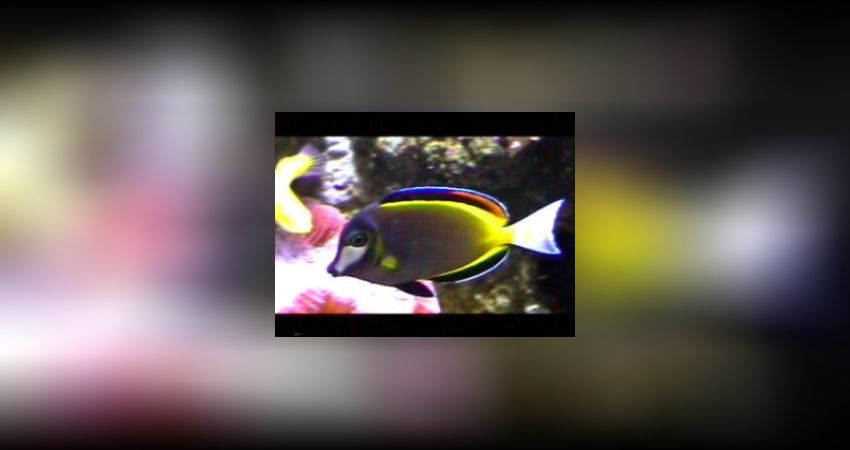
Acanthurus japonicus, the Philippine surgeonfish, is far less common in the trade than the white-throated surgeonfish. Nevertheless, it is as delicate in care and sensitivity as the A. leucosternon. There are only a few who keep it for a long time. Others who have kept it for a while describe it as less sensitive, but often it is no longer visible in these aquariums after a while. Without a UV system you should not even think about keeping it. In order to stress it less, you should not keep other Acanthrurus species with it, this often makes them particularly sensitive. It should also be offered a large aquarium of about 800 litres when it has exceeded 10 cm. At about 14 cm, it is considerably smaller than other Acanthurus species and comes from the Pacific Northwest, Südjapan and the Philippines.
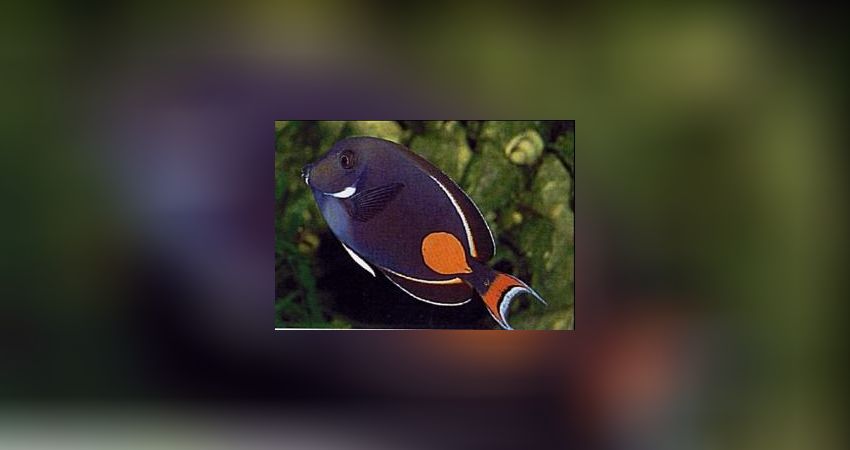
Acanthurus achilles, is also found in the trade in rather small numbers. We would classify it as at least as delicate in care as the white-throated doctor, but this is usually resolved after the delicate start-up phase. On the other hand, the Achilles tends to be very territorial and to attack other fish or it suppresses them very often. A very sensitive fish, we would also think twice about buying it. The survival rate is certainly not much higher than with the white-throated doctorfish. It is also not to be socialised with other acanthurids, as it simply becomes too aggressive with increasing size. It is found in various parts of the Pacific Ocean up to and including Micronesia and Hawaii.
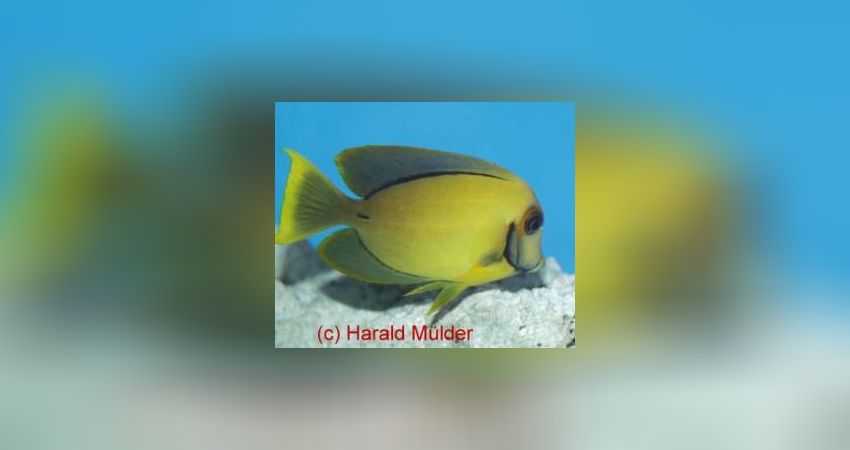
Acanthurus pyroferus the Pacific mimicrydoctor comes from the Indo-West Pacific. It is by far not as problematic to keep as the aforementioned species and grows to about 17 cm in the aquarium. It also needs enough swimming space, when fully grown it should have more than 1000 litres available. Especially interesting is the mimicry of different dwarf caises in forum and colour. These include Centropyge flavissimus, C. heraldi and C. vrolikii. It also belongs to the doctrines that change their colouring several times. A good aquarium keeper for larger aquariums, and not so sensitive and aggressive towards other fish or conspecifics. An Acanthurus we can also recommend without much hesitation
.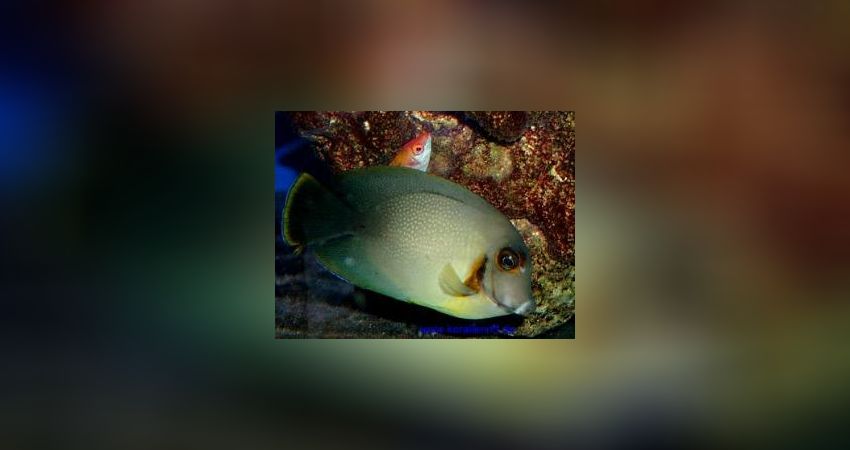
Acanthurus chronixis: This is not really an Acanthurus chronixis but a semi-adult Acanthurus pyroferus. Despite all this, it is still offered in the trade under this name, which is not correct. Acanthurus chronixis has only been seen a few times and is very very rare. To our knowledge, (pers. message from Andre Luty) there are only one or two specimens preserved in alcohol in the USA. More information is almost impossible to get except from Randall himself. We hope that the trade will get used to the new name, as it has actually been known for a long time.
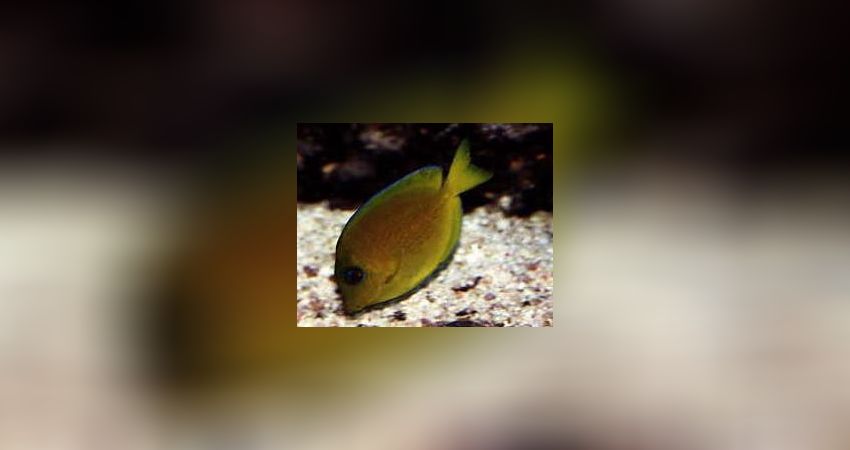
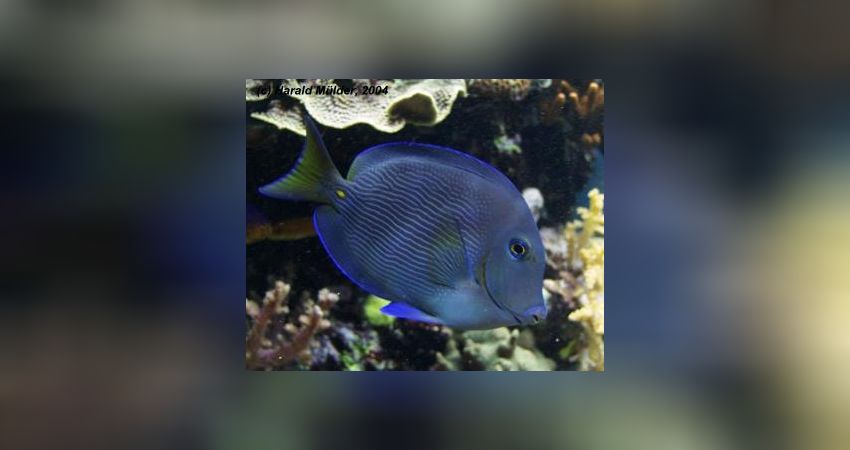
Acanthurus coeruleus - blue surgeonfish in the picture still in juvenile colouring: We do not consider the blue surgeonfish to be as difficult and sensitive as the three problem fish Acanthurus leucosternon, A. japonicus and A. achilles. However, with a size of about 30 cm it will simply be too big for the normal reef tank in the long run. However, it can be kept well for several years if it is introduced very young. It doesn't seem to get along very well with other doctors, especially juveniles don't get along at all with Zebrasoma flavescens. Both are yellow....although this is only a guess... Keeping Acanthurus in pairs should not be attempted, as even in very large aquariums it can usually lead to problems between the animals. Keeping them in pairs may work for a while, but adult fish usually stress each other so much that the life expectancy is not as high as when they are kept alone. Acanthurus coeruleus is also a quite active fish, which also likes to mark the boss in an aquarium - a character trait that could almost be applied to the whole family. As long as there is no other fish that wants to challenge its rank, it is a quite peaceful contemporary. Subordinate doctrines, however, are often approached very aggressively. This doctor also changes his colour. Juvenile it is always yellow, later it becomes completely blue, with a white to yellow caudal spine. It is found in the tropical West Atlantic but also in Asencion. Kuiter/Debelius report that there are even northern outliers as far north as New York and as far south as Rio de Janeiro.
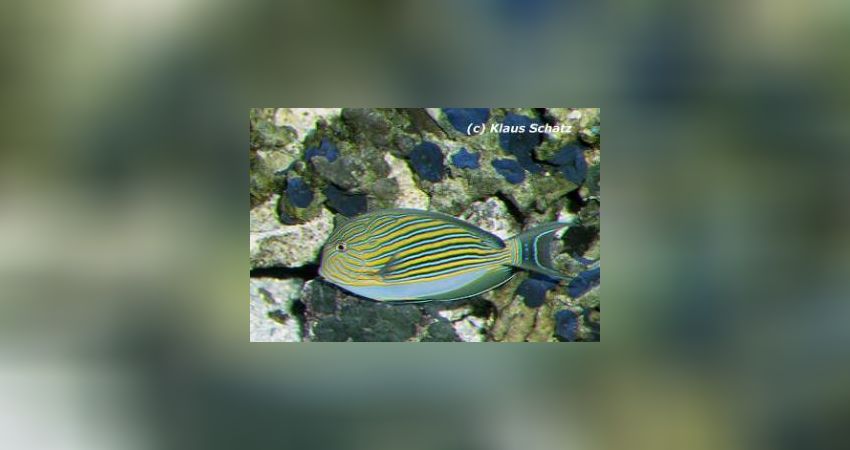
Acanthurus lineatus the blue-striped surgeonfish: You see it quite often in the trade, too. No wonder it is a really beautiful and interesting surgeonfish. Often there are even several of them swimming in different containers in the specialised trade. With luck you will see a large specimen, where you will realise that such a large fish will need a lot of swimming space. It is not unfamiliar delicate, although not easy to get used to. Once established, however, it is a quite stable fish. However, as it grows to a good 30 cm, it needs a really large aquarium. To make matters worse, it is sometimes quite aggressive and can attack other fish.
This is mainly directed against other doctors, but one cannot rule out that it will not also suppress other small fish. Keeping them in pairs or groups does not work, or at least not for long. Two smaller ones can be kept together for a short time, but as they grow they will fight more and more until only one remains. Exceptions certainly confirm the rule.... but do you really want to find out? For a reasonably adequate care of a half-grown fish in an aquarium you should have more than 1000 litres of water, and for an adult it should be at least 5,000 to 10,000 litres. One of the fish that need a lot of "run" and swim very fast and a lot all day. Acanthurus lineatus is widespread in the Indo-West Pacific. However, it is definitely not an animal for a 500 litre aquarium, no matter how beautiful it is.
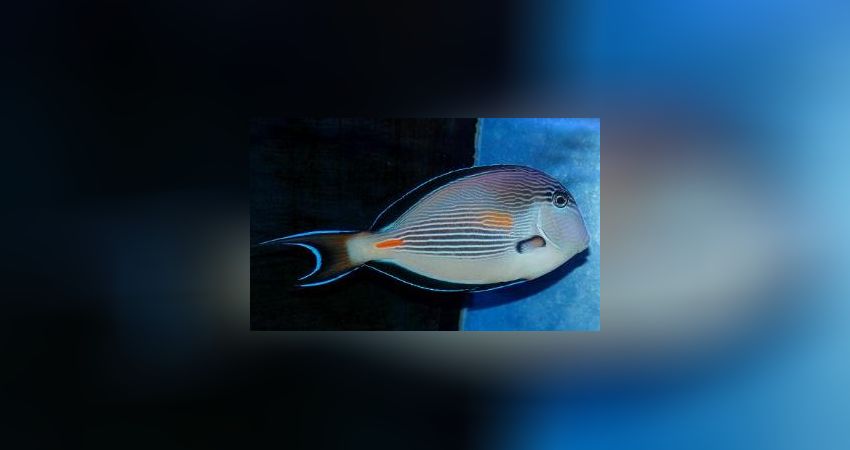
Acanthurus sohal the Arabian surgeonfish: Its occurrence is restricted to the Red Sea, the Arabian Sea and the Arabian Gulf. Unfortunately, it grows even 5 cm larger than Acanthurus lineatus, so that one must assume similar aquarium sizes! This means that it can reach 35 cm in a sufficiently large aquarium. Another similarity to A. lineatus is the quarrelsomeness and aggressiveness that some of these beautiful surgeonfish display in the aquarium. It is also not as sensitive as the first three species, but also not easy in the first days. All acanthurids need an excellent environment in the aquarium.
Keeping them in pairs or groups is not possible and would almost certainly cost one of the fish its life. A. sohal as well as A. lineatus tend to get along very badly with other Acanthurus species. So in terms of health you should not keep too many of one genus. This is especially true for the genus Acanthurus.
Conclusion:
Zebrasoma species are good to keep in the aquarium with small sacrifices, sometimes even as a pair or in a small group. They are less sensitive and, except for Z. rostratum, Z. veliferum and Z. desjardini, do not grow so large in their final size . Despite all this, a certain aquarium size should also be offered to the smaller surgeonfishes. We suggest a minimum size of 500 litres for smaller surgeonfishes of the genus Zebrasoma. Remember that the fish grow over the years. As soon as a surgeonfish tends towards hospitalism and swims permanently from right to left, you should either give the fish away or get a larger tank. They swim a lot but not nearly as much, as fast and as agile as Acanthurus species. Almost all Ctenochaetus species are recommended for aquarium keeping. They are neither particularly aggressive nor difficult to train and keep. Species that grow larger should be given more swimming space accordingly. Acanthurus species are usually very sensitive, territorial and aggressive and need a really adequate swimming space, often several thousand litres. They can hardly ever be kept in pairs for a long time, and in most cases the socialisation between them does not work out. It may work for a while with some of them, we don't want to deny that, but in the long run and for years it usually goes wrong. In aquariums under 1000 litres no Acanthurus Doctor should be kept, and we see the 1000 litre mark as the bare minimum for small to medium sized animals. If the animals exceed 15 cm a 1000 litre tank is not even close to being sufficient. Thus, the purchase of surgeonfish should be considered carefully beforehand and should not be based on colour, shape, taste and availability, but on whether they fit into an aquarium.
Manuela Kruppas and Robert Baur-Kruppas
How do you like this article?
Info
Author

Bookmark
Comments
Topics
Similar articles
- 5 Jump Protection Solutions for Fish in the Aquarium - 5 Net Covers
- How a marine aquarium is created-Part 15 and 16: first corals, cleaning crew and algae phases
- Wenn neue Fische nicht fressen wollen.....
- Fish Catching in the Aquarium | Nyos Floating Fish Trap (Ingenious)
- How a marine aquarium is created Part 52: The end of the Aqua Medic Armatus 400
- How a marine aquarium is created-Part 13: The PH value
- Eine Tridacna schlägt zurück....
- 24 - Horn corals or gorgonians
- 36 - Pests Part 1
- Haie - Die Wahrheit über diese Tiere!
Comments To the top
Please register
In order to be able to write something yourself, you must register in advance.






